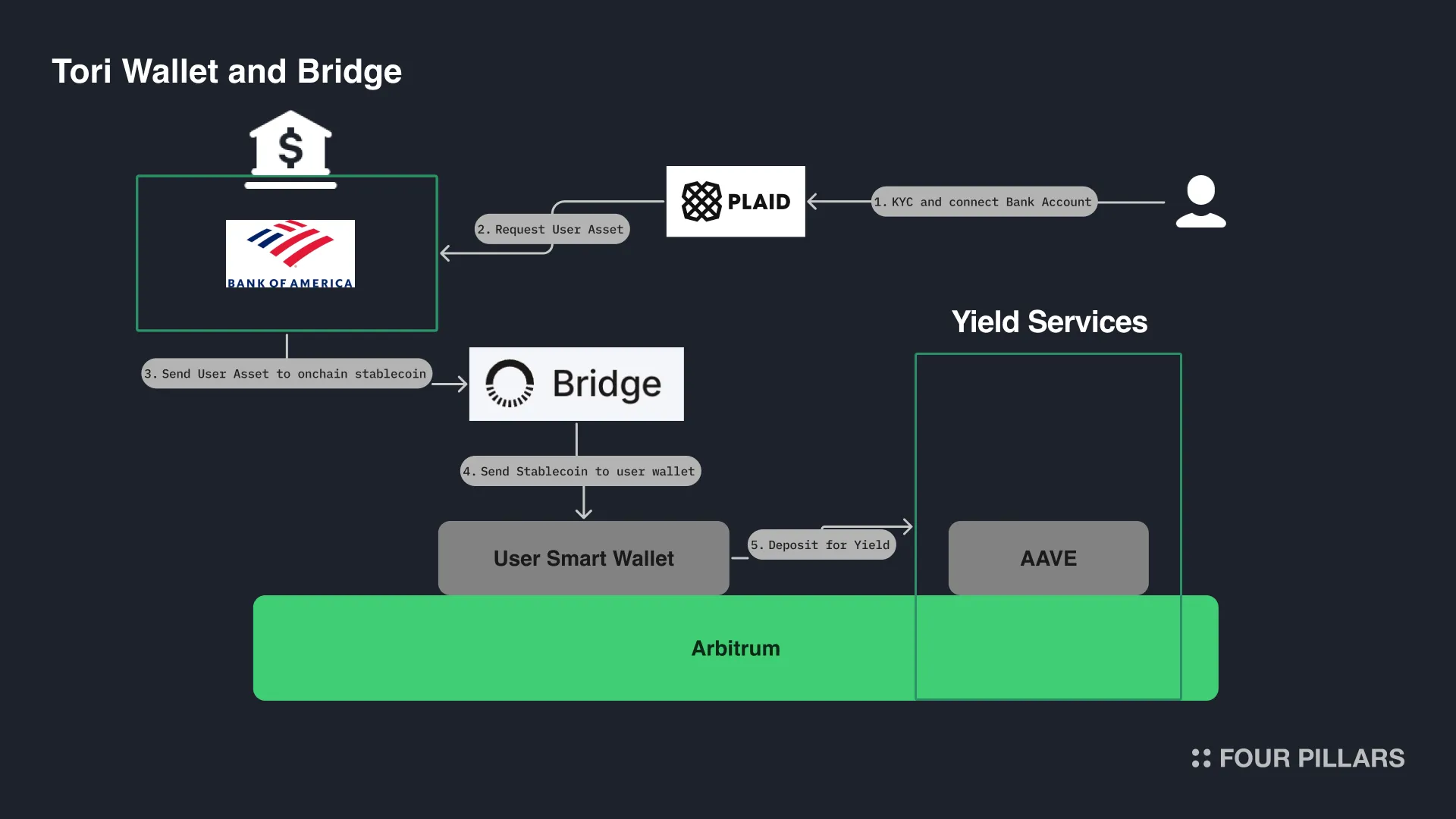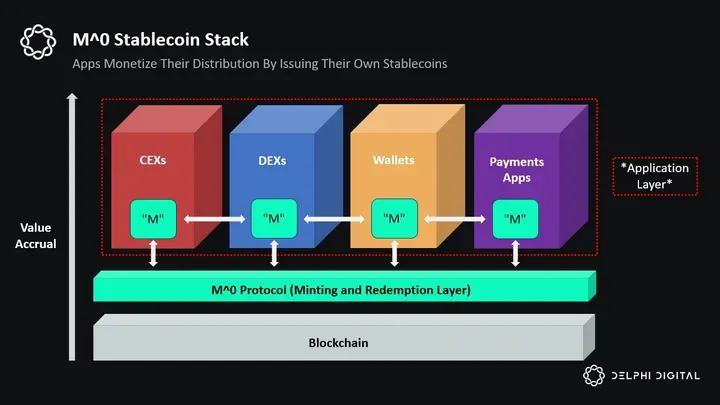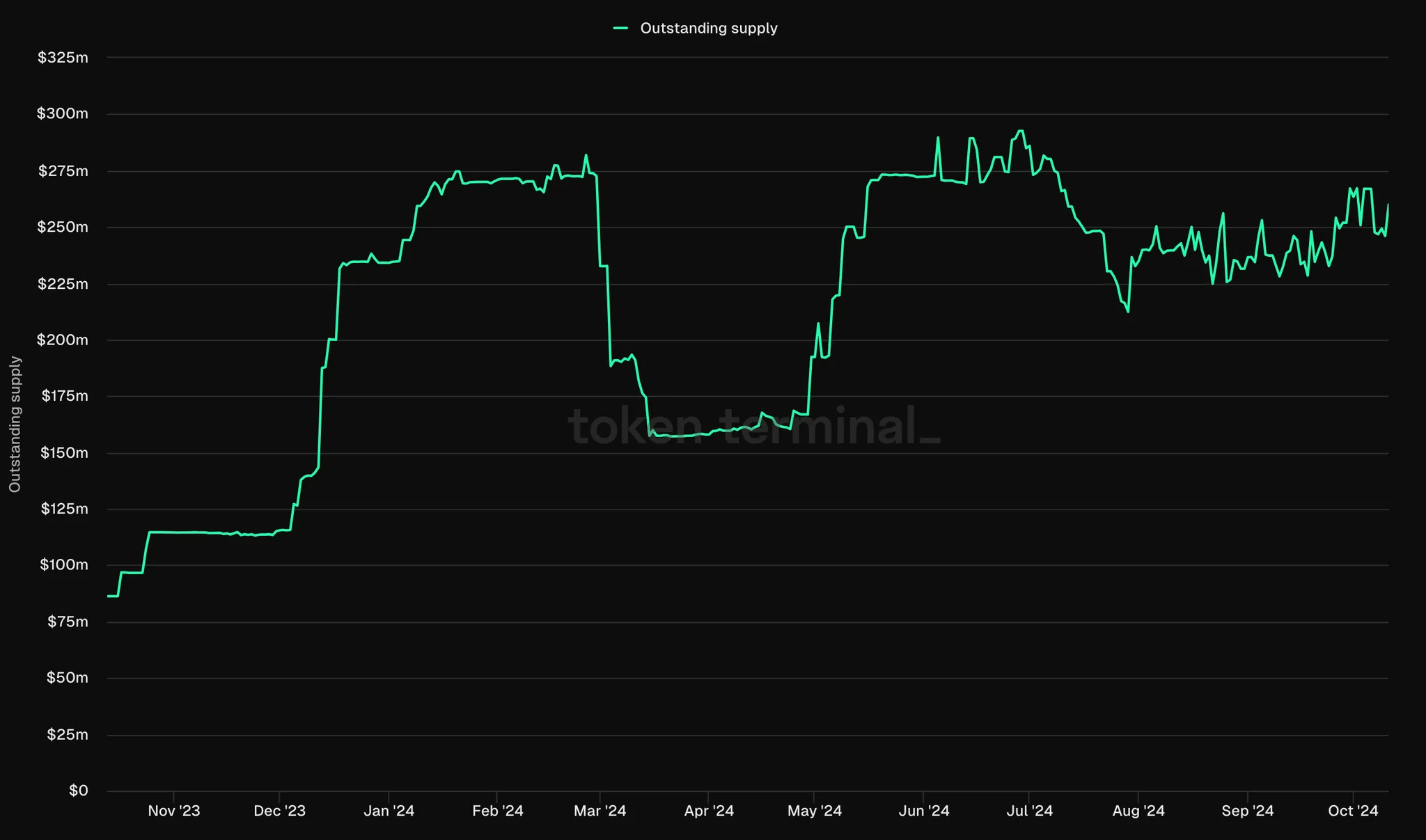Stripe has acquired Bridge, a stablecoin API startup, for $1.1 billion, marking its biggest crypto sector deal and signaling a strong commitment to the stablecoin market.
Bridge provides infrastructure for businesses to create, store, and process stablecoins, facilitating cross-border transactions and treasury management without the need to understand the complexities of blockchain.
Stablecoins are becoming mainstream in global payment infrastructure, with daily transactions reaching $40 billion and circulating supply nearing $180 billion.
They are offering more efficient cross-border payment solutions, and the stablecoin infra is becoming more comprehensive and sophisticated.
Major fintech companies like Robinhood and Revolut are exploring entry into the stablecoin market, following PayPal's successful launch of PYUSD, indicating a growing convergence of traditional fintech and crypto industries.
In the past, Stripe has had a complex involvement within crypto. In 2014, they began accepting Bitcoin payments but stopped in 2018 due to its volatility and slow transactions. After a brief stop, Stripe renewed its interest in digital currencies, joining and later leaving Facebook's Libra project.
In 2022, Stripe re-entered the crypto space by facilitating fiat-to-crypto payments. By 2024, they announced support for stablecoin payments, specifically Circle's USDC on Solana, Ethereum, and Polygon blockchains. This strategic shift aims to leverage blockchain benefits like instant settlement and lower costs while avoiding the volatility of traditional crypto.
Yesterday, Stripe took a big step to acquire Bridge, a stablecoin API, for $1.1B. This is the biggest acquisition deal for Stripe in the crypto sector. In the latter section, let's look into what Bridge is and its implications.

Source: Stripe Strikes Biggest Ever Crypto Deal: TechCrunch Founder Confirms Bridge Acquisition
Bridge is a fintech startup that specializes in providing infrastructure for crypto stablecoins. It offers an API that enables businesses to create, store, and process stablecoins. Along with this API, customers can facilitate cross-border transactions and treasury management. This makes it an attractive option for businesses looking to integrate stablecoin functionality without dealing with the complexities of underlying blockchain technology.
Looking into the past, the firm was founded by Zach Abrams and Sean Yu. Bridge has secured $58 million in funding from prominent investors, including Sequoia Capital, Ribbit Capital, and Index Ventures. The company has already processed over $5 billion in annualized payment volume and boasts clients that include SpaceX, Coinbase, and Strike.
Bridge's focus on simplifying global money movement for both crypto-native and traditional firms has positioned it as a key player in the stablecoin infrastructure space.

Source: Bridge | Stablecoin API for developers

Bridge is used in Utopia Labs' Tori Wallet to facilitate the conversion of fiat in banks into stablecoins, and vise-versa. Initially, users connect their bank accounts through KYC and by using Plaid. Once connected, users can request the transfer of assets from their bank account, such as Bank of America, into the Tori Smart Wallet. This process allows users to convert fiat currency into stablecoins without needing any knowledge of crypto transactions.
Once the user's assets are converted into stablecoins via the bridge, these crypto assets are sent to the user's smart wallet. The bridge ensures that users can easily move their funds from traditional banking systems to the blockchain.
After the stablecoins are in the user’s smart wallet, they can be deposited into yield-generating protocols like AAVE through Tori Wallet's interface. This allows users to earn interest on their holdings in real-time, offering potentially higher returns than traditional banking products. The process allows individuals unfamiliar with DeFi to benefit from crypto yields while maintaining control over their funds through a self-custodial wallet system.
Stripe's acquisition of Bridge for $1.1 billion has significant implications for the fintech and crypto industries. This move indicates two key points: (1) Stripe is bullish about the stablecoin/crypto sector, and (2) stablecoins are becoming mainstream with sophisticated infrastructure. What developments should we monitor in the near future?
Stablecoins are changing how global payments work by connecting traditional finance with crypto. This helps solve problems with cross-border transactions and offers stability in areas where currencies are unstable. The use of stablecoins has been increasing, with daily transactions reaching $40B, and circulating supply reaching an all-time high near $180B.
Financial companies can use stablecoins to provide global payment options that are more efficient and cost-effective. By using this infrastructure, companies can reach new markets and meet the increasing need for digital currency options. The easy conversion between regular money and digital currencies allows people to participate in both traditional and crypto finance.

Source: Stablepulse: Analysis of Stablecoin Data by Electric Capital
The stablecoin infrastructure process enables seamless movement between fiat and crypto currencies. Here's an overview of key steps and example providers:
Fiat Deposit and Minting: Users deposit fiat currency into the issuer's bank account. The issuer then mints equivalent stablecoins on the blockchain. Examples: Circle and Tether.
Distribution and Custody: Newly minted stablecoins are distributed to users' crypto wallets or exchange accounts. Custodians secure private keys and manage funds. Examples: BitGo, Fireblocks, Coinbase Custody.
Compliance and Monitoring: KYC/AML procedures are implemented throughout. Smart contracts and reserves undergo regular audits. Examples: Chainalysis, Elliptic, CipherTrace.
As the space evolves, this infrastructure is being packaged into more comprehensive solutions. Providers like Bridge, TransFi, and Stably offer integrated services for businesses and users alike.
Additionally, protocols such as M^0 Finance are introducing decentralized, multi-issuer stablecoin systems. These platforms allow various institutions to create interchangeable cryptodollars while adhering to local regulations.
As this infrastructure becomes more sophisticated, the options for both stablecoin issuers and users will expand and become more convenient.

Source: A New Framework For Understanding Moats In Crypto Markets - Delphi Digital
Fintech giants are increasingly exploring the stablecoin space, eyeing its potential for revenue growth and improved cross-border payments. Robinhood and Revolut are among those considering their own stablecoins, anticipating that stricter regulations in Europe and beyond will create opportunities in the digital-asset sector.
This move signals a growing overlap between traditional fintech and the crypto industry. As established fintech players enter the stablecoin market, we could see wider adoption and integration of these digital assets in mainstream finance. PayPal's PYUSD stablecoin, launched in 2023 and now boasting a market cap over $250 million, exemplifies this trend. The influx of fintech companies into the stablecoin space may spark increased competition and innovation, potentially leading to a diverse landscape where various financial apps operate their own tokens.

Source: PayPal Outstanding Supply | Token Terminal
Related Articles, News, Tweets etc. :
Dive into 'Narratives' that will be important in the next year